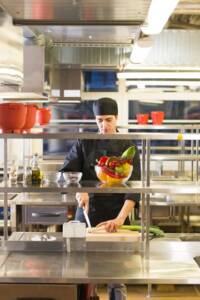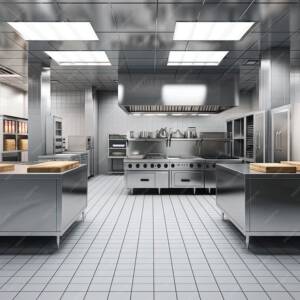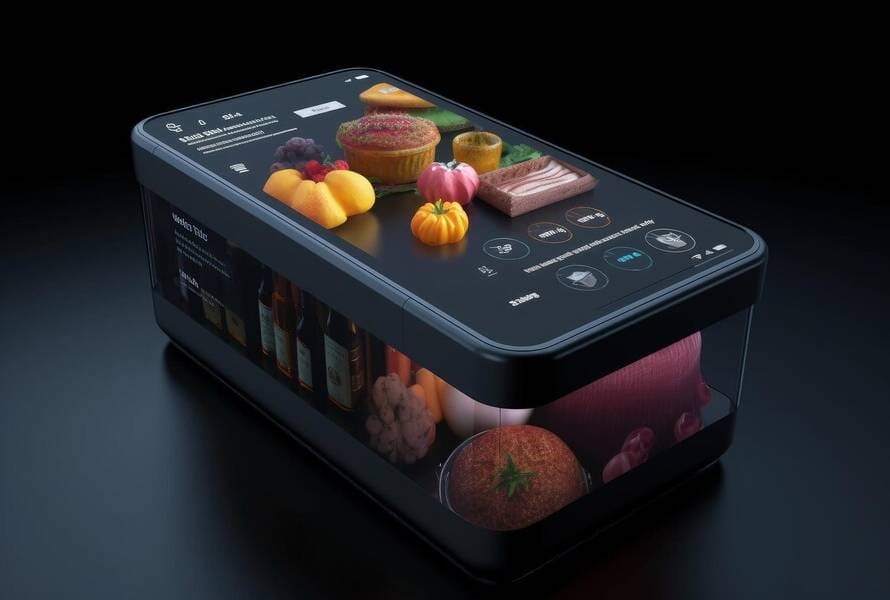
Commercial restaurant and kitchen design is one of the most important factors for the success of any food business. In addition to delicious food and excellent customer service, smart and functional kitchen and restaurant design is crucial to increasing efficiency, reducing costs, and improving the customer experience.
In this article, we will discuss all aspects related to commercial restaurant and kitchen design and how to plan them in ways that ensure success
The importance of appropriate design for commercial restaurants and kitchens
The design of commercial restaurants and kitchens plays a vital role in the success of the business, as it affects the speed of food delivery, the efficiency of the staff, and the flow of customers inside the place. Good design contributes to providing suitable space for workers and reduces accidents and errors in the kitchen, in addition to improving the restaurant atmosphere and attracting more customers.
Improve operational efficiency
Carefully designed commercial kitchens help improve the efficiency of internal operations by organizing the workflow. For example, distributing cooking equipment and appliances in a way that allows easy movement and quick access to the required tools contributes to speeding up operations. In addition, good restaurant design can reduce the need for extra labor, which saves additional costs.
Improve the customer experience
Restaurant design directly affects the customer experience. Lighting, table layout, and colors all create an atmosphere that suits the type of food you serve. For example, a modern design is suitable for fast food restaurants, while luxurious interior designs enhance the dining experience in upscale restaurants.
The basic elements of designing restaurants and commercial kitchens
There are several elements that must be taken into account when designing restaurants and commercial kitchens to ensure work efficiency and customer comfort. The most prominent of these elements are:
Good space planning
The space allocated to the kitchen and restaurant must be carefully studied to allow freedom of movement and avoid congestion. The distribution of space depends on the type of food served and the expected number of customers. Kitchens that serve fast food usually require more space compared to kitchens that serve luxury meals.
Choosing the right equipment
The equipment used in designing restaurants and commercial kitchens plays an important role in facilitating cooking and serving processes. Devices and equipment must be chosen that are compatible with the daily production volume of the restaurant. It is also necessary to choose high-quality equipment to ensure long life and reduce the need for maintenance.
Ventilation and cooling
Ventilation and cooling systems are one of the basic aspects of designing restaurants and commercial kitchens. Ventilation eliminates smoke and unpleasant odors, while cooling systems maintain the safety of food and protect it from spoilage
Health and Safety Considerations in Commercial Kitchens
Commercial kitchens are subject to a set of health standards that must be adhered to to ensure food safety and customer health. The design of restaurants and commercial kitchens requires compliance with these requirements to ensure that the restaurant obtains the necessary licenses to operate.
Hygiene Standards
Commercial kitchen designs must ensure that floors, walls, and surfaces are easy to clean. Using antibacterial materials and allocating isolated areas for storage and cooking helps maintain a clean environment.
Avoid Accidents
Reducing accidents inside the kitchen is an essential part of successful design. This can be achieved by improving lighting, ensuring sufficient space between equipment, and allocating clear paths for movement. It is also important to use non-slip materials on the floors to avoid accidents
Steps to Design Restaurants and Commercial Kitchens
When starting to design restaurants and commercial kitchens, there are specific steps that must be followed to ensure an ideal design that meets the needs.
Business Needs Analysis
The first step to take is to analyze the needs of the restaurant in terms of the type of food served, the expected volume of demand, and the number of employees. Based on this analysis, the required spaces and types of equipment can be determined.
Collaborate with Design Engineers
You should work with engineers who specialize in designing restaurants and commercial kitchens to ensure that the design is in line with health requirements and makes the most of the available space.
Review designs and test work
Once the design is developed, it should be reviewed and tested in real conditions to ensure its effectiveness. Changes can be made based on this experience to ensure maximum efficiency in work
Modern Trends in Commercial Restaurant and Kitchen Design
Restaurant and commercial kitchen designs have evolved significantly in recent years, with a focus on technology and sustainability. Among these trends are:
Technology-driven
Many restaurants rely on technology to facilitate daily operations. Automated order management systems, smart monitoring systems to track food status, and advanced cooking appliances are all examples of how technology is being used to improve work efficiency.
Sustainable Design
The trend toward sustainable design has become one of the leading trends in commercial restaurant and kitchen design. Using environmentally friendly building materials, reducing energy consumption, and recycling waste are steps that can help protect the environment and reduce operating costs
Impact of Global Trends on Commercial Restaurant and Kitchen Design
Recent years have witnessed major transformations in the design of commercial restaurants and kitchens, influenced by global changes and modern trends. One of the most important of these trends is the focus on sustainability and reliance on smart technology.
Sustainability in Restaurant and Kitchen Design
Due to the increasing awareness of the importance of protecting the environment, sustainability has become one of the basic criteria in the design of commercial restaurants and kitchens. From using environmentally friendly building materials to reducing energy and water consumption, restaurant owners seek to reduce their environmental impact. Waste can also be recycled and smart systems can be used to reduce food waste.
Reliance on smart technology
Technology has become an integral part of modern commercial kitchens. Among the recent innovations are automation systems that help reduce human error, and automated ordering technologies that reduce the time it takes to place orders. Smart kitchens also rely on connected devices that can be controlled remotely, which contributes to improving efficiency and reducing operating costs.
Ultimately, the design of commercial restaurants and kitchens is vital to the success of any food project. Through proper planning, choosing the right equipment, and designing that balances beauty and efficiency, an exceptional customer experience can be achieved and daily operations in the kitchen can be increased.
If you need assistance in designing your restaurant or commercial kitchen, ProNano Food Industry Consulting offers specialized consulting services that help you through all stages of design, from planning to implementation. You can contact our team for customized consultations that meet your needs and ensure the success of your business project.
Read more about food project management



